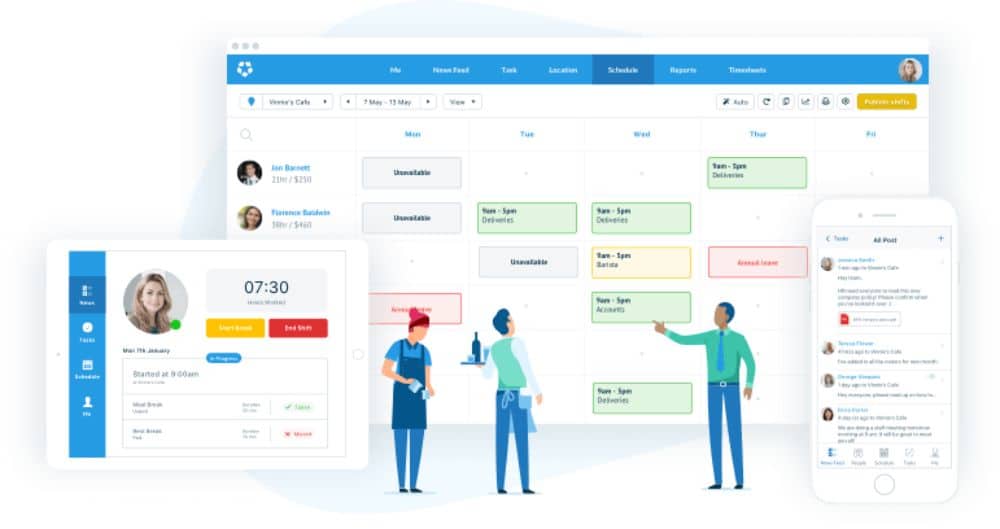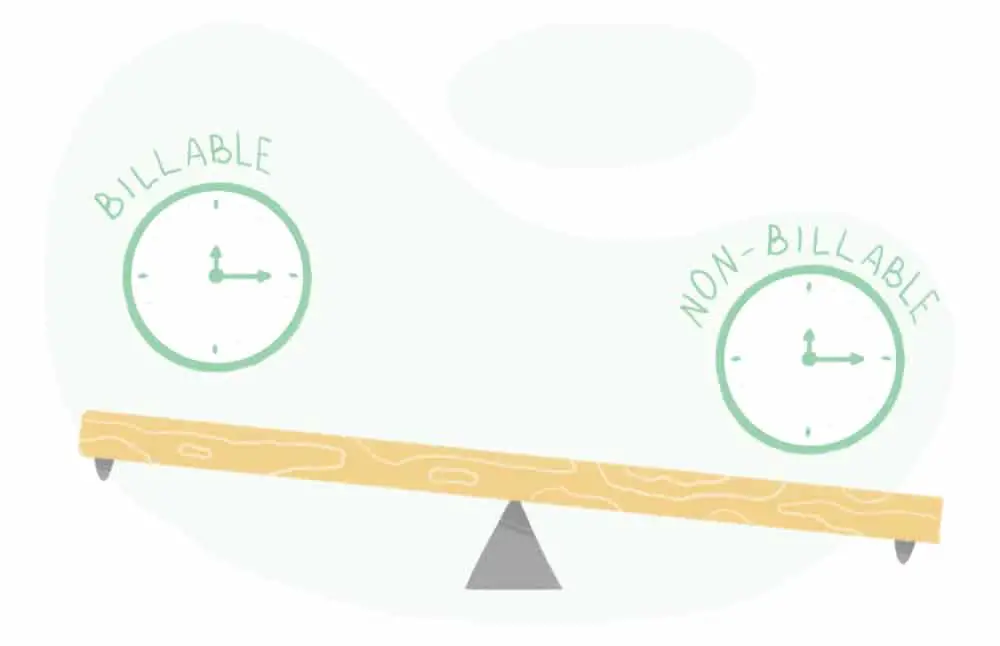14 Time Tracking Secrets all Designers Must Know
Whether you are a freelancer or employee at a graphic design firm, the design process stays the same. There are many steps involved in every design category that create the complicated method for the best creative output. And when you are working on multiple projects simultaneously, it becomes really tedious if your organizational skills are lacking.
So time management and time tracking are very important parts of a graphic design professional’s life. You might have to report to your boss as a part of your job, or you might have to do it for your satisfactory practices. But with designing, it can be a little challenging to track down every step and every process because of its fluid nature. And therefore, we have put together 14 time-tracking secrets all designers must know.
These secrets are expert’s guidance, and they talk about how you can keep track of work in your design career with minimum hassle. Let’s dive into the details.
1. Manual Time Entries Are More Feasible For Beginners:

For beginners, it is not advisable to follow long spreadsheets and complicated manuals. The simple time tracking process starts from noting down the time manually into your personal document. That’s the basic step every beginner should take before jumping into any difficult time tracking formulas. It’s not important to track everything from the first day.
If you want to include this in your routine, then make it simple and easy to start with. Keeping a timer on your phone and note downtime entries of the beginning and end of some task or project can be your ideal first step. So do not make things overwhelming to make this practice more convenient and easy to incorporate.
2. Divide The Project Into Steps:

The most prevailing activity among designers with time tracking is dividing the project into some key steps. It really helps you analyze which step takes how much time and what you can do to improve the overall performance. You might have a different process for different projects. So to take your time tracking into more detail, you can divide the project into some common key segments and analyze their time to know what exactly happens with that process.
Planning, research, conceptualization, designing, testing, and delivering are basic steps of any design project. They all can have some other vital segments as well, so according to your project, you can create the divisions and track their time.
3. Analyzing Your Capabilities Is Important Before Giving Weightage To All Steps:

When it comes to deciding an approximate time weightage for each of your processes, you are not supposed to make hasty decisions; this is in regard to the estimation process of a project. After practicing time tracking for a while, you can estimate approx time for upcoming projects. But before that, make sure you have examined your capabilities thoroughly.
It’s not the same for every designer, so never put a time tracker as per some random online data or peer pressure. Know your abilities and limits, and then decide how much time you need to finish a specific process. It’s crucial for every designer in order to make a valid time tracking report.
4. Every Small Activity Can Not Be Part Of Time Tracking:

You are very likely to add your small activities to the time tracking plan, which is not a beneficial thing to do. Some standard key steps are an essential part of time tracking, and they do require your attention, but you should not include your custom activities titles in time tracking. Because instead of helping you to get a clear idea, they might create confusion and complications to your project.
With time tracking practice, simpler is better than anything, so try to make every element minimum and avoid adding unnecessary small project activities to the plan. Simple advice would be to use the broader terms instead of pieces of smaller activities to make a perfect time tracking plan.
5. Time Blocks Are Always Very Helpful:

To encourage the time tracking practice, there are some helpful tricks that can make the process easier. Dividing your day into time blocks is one of them. Of course, you can divide it into weeks and days as well, but usually, designers work on a daily basis and prefer to divide in hours. Dividing your day into time blocks and assigning each block to particular activity is a simpler form of time tracking.
By this process, it gets easier to understand the time proportion of each activity. And you become more alert and clear about how to manage every hour and decide the weightage. So it’s a brilliant simple trick to practice more time tracking in a daily routine.
6. The Pressure Created From Time Tracking Can Improve Productivity:

Ideally, pressure is not the primary objective of time tracking. And stringent time tracking practices in offices are also not very beneficial to anyone. But if you look at the brighter side, time tracking inevitably creates pressure and discipline, which you can take as a positive challenge and turn in your favor.
Before time tracking, you might be working in freestyle, but now you follow a certain pattern and organize your time very well, which can surely increase efficiency. Good management and disciplined designing process encourage better results and quicker output. So instead of getting overwhelmed with the pressure, try to set some bearable pressure and enjoy it with unexpected results.
7. Automatic Time Trackers Can Offer Amazing Solutions:

There are amazing automatic time tracking software and tools available in the market. You can find it for free and for paid versions as well. They are widely used in large organizations to make things smoother. These tools have excellent functions and options to support your time-tracking activities. You get a fantastic experience that makes the time tracking process more exciting and enjoyable.
Automatic tools can take care of every minor and major activity for you and gives you your desired output. In addition, you can get various analytics and reports, save your data, create new elements and make it more professional. So if you want to access advanced time tracking benefits, it’s good to get some smart time tracking tools.
8. Stringent And Unbiased Calculation Is A Must:

If you are a dedicated designer who wants to implement time tracking for yourself, it’s important to become completely honest with the process. After getting all your project’s tracking data, you need to calculate and come to a proper conclusion. There is no scope of excuses and confusing results for correct time tracking practices.
You need to be stringent and take unbiased calculations to know the precise status of your time tracking. A half-neutral report is of no use for a designer who wants to have the benefits of disciplined time tracking. So for the long run, it’s better to make standards correct from the beginning. Try to make sure you critically observe the data and make suitable reports.
9. Categorize Projects And Making Tags Is An Essential Step:

Reporting part expects attention and efforts just as much as the time tracking part. When you are handling multiple projects, you need to understand each project’s nature and expectations. Time tracking of a day can not help you to go deeper with the project line. So start analyzing time tracking data as per projects. And then create your custom tags for different types of projects to make your job more organized and seamless.
You can do this on the basis of core activities, deliverables, clients, or deadlines. According to your work and market, you need to take this step and create categories and tags for time tracking purposes.
10. Distractions And Amendments Are Not Consistent:

One thing you have to understand in time tracking that your distractions and then followed amendments are not a consistent part of your time tracking practice. They can be possible in the beginning stage, but their becoming natural part is highly prohibited. However, if you want to avoid your distractions from starting, try using the distraction time bracket in the schedule.
This way, you can train your brain to use every kind of distraction and other activities in that time period only—the lesser the distraction higher the results, and eventually, no amendments. So train yourself to follow a disciplined pattern and use the time wisely for a perfect time tracking report.
11. Maintaining A Personal Sheet And Reports Are The Secret Ingredients:

Even if you have a senior to report to, it’s better to keep a personal note and report. Time tracking data can have various affecting factors, and if you are using an automatic tool, then many variables would not be in your control. And that’s why a personal sheet of time tracking can help you a lot to analyze your actual work, and it’s easy to maintain and easy to fetch fruitful results.
So include a personal sheet of time entries in your time tracking practices, especially when you rely on some tool or outsourced method. This way, you can give concrete time tracking analysis to your client or employer.
12. Non-billable activities Also Matters:

As mentioned before, the designing process can have layers of activities related to research, planning, preparation, and designing. So when you are time tracking your work for a certain project, you need to include some non-billable activities as well because they also contribute a lot to the end result.
Your research hours, collecting essential approvals and licenses, making multiple amendments, and many other minor activities that you might not include as a core designing work should also get counted in the time tracking report. Because they complete your project and cost you many things.
13. Estimate Project And Monitor It Every Time:

After working on a suitable time-tracking practice for a while, you can move towards the estimating and monitoring part. With every new project, you can estimate the time in advance and then monitor it in several intervals to check how close you can come to your own predictions.
It is an essential step because it gives you authority over your time management cycle. Slowly, you would know how many hours you would invest in different activities and projects before working. But it can happen only when you have critically observed your time tracking pattern and learned about your working system.
14. Complex Methods And Standards Are Not Necessary:

If you believe that only complicated professional time tracking practices can help your design process, you are seriously mistaken. Sometimes you don’t have to take the difficult way because simple options can also do the job. As per your working pattern and understanding, you can come up with any basic plan to keep the right track of time.
The end motive of time tracking is to have clear data of time and respective tasks, which don’t necessarily have to include complex processes and standards. Try to make it as simple as you can so that it remains easy to follow and implement every time you work on a new project.
Time tracking really helps a designer to know his own areas of expertise and improvements. Delivering a successful design is the ultimate goal of a designer’s job but delivering it within a reasonable timeline is also equally important. Implementing time tracking practices from the beginning of a career can help you a lot in the long run.
It helps you to work seamlessly with better organizational skills. And at some point, every designer feels that each of his processes should have a definite time bracket to forecast a complete project before agreeing to a particular deadline. So with the secrets mentioned above, you probably have got an idea of how you can start and where you need to work on.
You can achieve better payment and better effectiveness with proper time tracking practices. So observe your working pattern and start implementing time-tracking practices with utmost priority to become the best in the market.